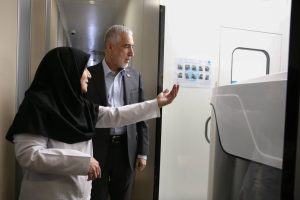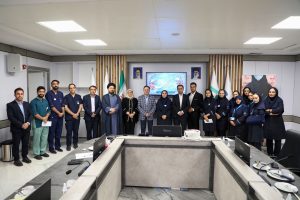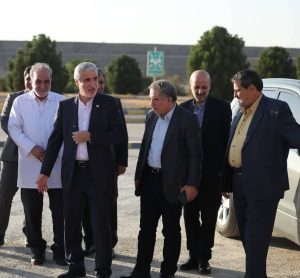
Decoding Media’s Crucial Role in Defining Healthcare’s Tomorrow
Barekat Health & Pharmaceutical Group: In a world where news often precedes reality and public opinion renders judgment before analysis, public relations has transcended its traditional ceremonial or promotional role; it has evolved into the vanguard of a battlefield where public trust is a vital currency for healthcare systems. In this context, recent remarks by Dr. Raisi, Deputy Minister of Health, on the occasion of World Communications and Public Relations Day (May 17) underscore the strategic significance of this role anew.
Beyond Information Dissemination: Architecting Trust in an Era of Distrust
At the National Public Relations Managers’ Summit of Medical Sciences Universities, Dr. Raisi asserted that public relations must serve as the custodians of public trust in health. This ostensibly simple statement carries profound implications. In a country with millions of social media users, instantaneous information circulation, and phenomena such as “yellow medicine,” celebrity-endorsed therapies, and vaccine misinformation, the credibility of a healthcare system is defined not merely by clinical outcomes but by public perception.
Public confidence in the Ministry of Health and health media outlets as reliable sources is achievable only through dedicated public relations efforts. This trust is established when medical information is disseminated with transparency and accuracy. Otherwise, no matter how advanced the medical treatments and breakthroughs are, without the public’s trust, they remain unrealized potentials. Given past experiences, the populace continually seeks authentic and reliable information. In a landscape heavily influenced by rumors, public relations teams must leverage modern communication and media tools to maintain continuous engagement with the public, fostering awareness and delivering truthful information.
Triangular Prism of Success or the Knots of Deadlock?
Dr. Raisi further highlighted the imperative for public relations to be prepared to implement family medicine and population youth policies, positioning them as cultural agents of these strategies. Yet, is this role realistically attainable?
Family medicine, as an innovative healthcare model, necessitates societal persuasion. People must understand why initiating care through a family physician is essential, why referrals matter, and how equity in health is achieved through this pathway. This cannot be accomplished with mere banners or clips; public relations must become the cultural engineers of this transformation.
Additionally, active public relations participation in educational and cultural programs can familiarize the public with family medicine’s benefits and reduce misconceptions and societal resistance. Population youth policies present an even more complex challenge; promotional efforts devoid of sociological foundations risk backlash or opposition. Consequently, public relations must, with wisdom and authenticity, craft hopeful, grounded, and relatable narratives. Campaigns for population growth that ignore social, cultural, and economic contexts may sow dissatisfaction among diverse societal groups.
Therefore, public relations must meticulously analyze sociological data to identify public needs and tailor precise, purposeful messaging accordingly.
Three Pillars of the Ministry of Health: Challenge or Opportunity for Public Relations?
Each of the following domains constitutes a distinct strategic project for public relations:
-
Restoring the Dignity of Healthcare Workers
Without detailed and documented narratives of their sacrifices, work pressures, and achievements, recognition remains superficial. Public relations must reflect and amplify this dignity. Beyond mere information dissemination, this requires courage and transparency. For instance, during crises such as the COVID-19 pandemic, the valor and dedication of healthcare personnel must be consistently highlighted by public relations to foster public appreciation. -
Scientific Authority
Credibility emerges when society perceives official information as accurate, prompt, comprehensible, and impartial. Public relations must bridge the gap between specialized knowledge and public understanding. This function is especially critical during health emergencies and epidemics, where PR teams must not only simplify scientific data but also support underlying research, reassuring the public that health recommendations are grounded in robust scientific evidence. -
Social Capital
This hidden treasure gains meaning during crises. The COVID-19 pandemic illustrated the pivotal role of social capital as the public trusted health institutions and adhered to guidelines. In the post-pandemic era, rebuilding and sustaining this capital requires continuous dialogue, transparency, and bidirectional communication within the realm of public relations. PR must engage persistently with the public—not only during emergencies but also in normal times—to strengthen this trust.
Public Relations & New Media: Opportunity Amidst Threat
Today, public relations faces a formidable challenge: media landscapes have become uncontrollable, the boundary between news and rumor blurred, and platforms such as Telegram and Instagram actively shape public discourse. This reality is aptly described as a “turbulent media environment.” Success for PR is no longer about reactive speed alone, but about proactively managing narrative flows.
If public relations limit themselves to debunking rumors or responding to attacks, they will perpetually lag behind. Instead, they must become narrative architects, anticipating public concerns earlier than social media users, and proactively controlling the discourse. One crucial task is to prevent rumor proliferation by swiftly and transparently providing direct, clear information before misinformation spreads.
Furthermore, PR must harness new media and social networks optimally to disseminate accurate information and broaden communication channels with the public.
Public Relations as Arm of Wisdom, Not Merely a Megaphone
To transform into the “reference of trust,” public relations must redefine themselves. This necessitates the formation of dedicated teams specializing in media analysis, public opinion monitoring, communication sociology, and narrative design. These teams should continuously evaluate public sentiments and media trends to enable informed strategic decisions.
Moreover, PR professionals must engage directly on the “frontlines” — interacting with physicians, nurses, patients, and families — rather than limiting themselves to administrative desks. Such proximity enhances the quality of information dissemination and allows PR to understand real societal needs and respond with greater precision.
Additionally, PR must educate senior leadership that communication is an integral part of healthcare—not merely service promotion. Public relations can serve as strategic advisors to the Ministry of Health and medical institutions, ensuring that communication considerations are embedded in high-level policymaking.
Conclusion
Public relations in healthcare is no longer a mere administrative unit; it is a strategic actor upon which the survival of health policies depends. In an era where the velocity of news outpaces its veracity, public trust demands intelligence, honesty, and continuous engagement. Accordingly, it may be time for public relations to move from the organizational periphery to the core of decision-making and execution.
-
رئیس سازمان غذا و دارو در سل تک فارمد

-
بازدید رئیس سازمان غذا و دارو از سل تک فارمد

-
صدای زندگی در دنیای خبر: بازتعریف ژورنالیسم سلامت در عصر اطلاعات

-
گرامیداشت روز پرستار در بیمارستان سرطان برکت؛ دلهای سپید در آینه مهر و قدردانی

-
بازدید دکتر پیرصالحی از داروسازی ریحانه

-
رشد قابل توجه سودآوری و بهبود شاخصهای مالی البرزدارو در دوره ۹ ماهه ۱۴۰۴

-
علم، سلامت و انسان؛ روایتی از همافزایی برای آیندهای روشنتر

-
پایش سلامت در پاییز؛ از تقویت ایمنی تا حفظ شادابی پوست

